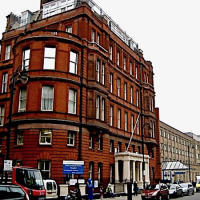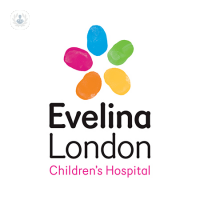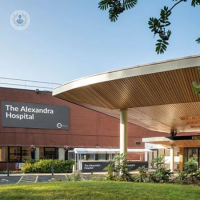What is joint hypermobility?
Joint hypermobility, also called hypermobility or Ehlers-Danlos syndrome, is a hereditary disorder that occurs when a person has greater flexibility in joints, tendons, muscles and cartilage.
What are the symptoms?
This disorder can produce symptoms such as the following:
- Backaches and scoliosis
- Pain in muscles and joints, such as the knees, fingers, hips and elbows
- Muscle stiffness and spasms
- Easy predisposition to bruising
- Dislocations
- Symptoms outside the joints, such as varicose veins, hernias or stretchy skin
Why does hypermobility occur?
The exact cause of joint hypermobility is unknown, however it has been confirmed that genetics play a major role. It is thought that a genetic mutation in the collagen fibers that affect the elasticity of tendons, ligaments, the skin and blood vessels causes the condition. Hypermobile joints are often referred to as loose joints and those with the condition are referred to as being “double jointed”.
Can it be prevented?
As the disorder is genetic in nature, it cannot be prevented, but complications can be avoided. Exaggerated flexion of the wrists or joints in the fingers should be avoided, that is, the fingers and the wrists shouldn’t be over extended or cracked. High-impact exercises should also be avoided.
What is the treatment?
Currently, there is no specific cure, but the effects can be mitigated with drugs (analgesics and non-steroidal anti-inflammatory drugs) and low-impact exercises, such as yoga or swimming. Improving muscle strength to protect the joints is vital, so your doctor may recommend occupational therapy or physiotherapy sessions to help with symptoms. You can also take home measures to reduce pain and stiffness by keeping joints warm, such as, having warm baths and using deep heat creams.
03-11-2015 02-11-2023гипермобильность
What is joint hypermobility?
Joint hypermobility, also called hypermobility or Ehlers-Danlos syndrome, is a hereditary disorder that occurs when a person has greater flexibility in joints, tendons, muscles and cartilage.
What are the symptoms?
This disorder can produce symptoms such as the following:
- Backaches and scoliosis
- Pain in muscles and joints, such as the knees, fingers, hips and elbows
- Muscle stiffness and spasms
- Easy predisposition to bruising
- Dislocations
- Symptoms outside the joints, such as varicose veins, hernias or stretchy skin
Why does hypermobility occur?
The exact cause of joint hypermobility is unknown, however it has been confirmed that genetics play a major role. It is thought that a genetic mutation in the collagen fibers that affect the elasticity of tendons, ligaments, the skin and blood vessels causes the condition. Hypermobile joints are often referred to as loose joints and those with the condition are referred to as being “double jointed”.
Can it be prevented?
As the disorder is genetic in nature, it cannot be prevented, but complications can be avoided. Exaggerated flexion of the wrists or joints in the fingers should be avoided, that is, the fingers and the wrists shouldn’t be over extended or cracked. High-impact exercises should also be avoided.
What is the treatment?
Currently, there is no specific cure, but the effects can be mitigated with drugs (analgesics and non-steroidal anti-inflammatory drugs) and low-impact exercises, such as yoga or swimming. Improving muscle strength to protect the joints is vital, so your doctor may recommend occupational therapy or physiotherapy sessions to help with symptoms. You can also take home measures to reduce pain and stiffness by keeping joints warm, such as, having warm baths and using deep heat creams.


How normal is hypermobility (double-jointed) and what pain can it cause?
Por Dr Anthony Hammond
2025-02-06
Joint hypermobility is a normal phenomenon but for some, it can lead to pain. Dr Anthony Hammon shares his expertise. Learn from him about what exactly hypermobility is, causes, how it's treated and more. подробнее


All about osteogenesis imperfecta in children
Por Mr Gregory Firth
2025-02-05
Osteogenesis imperfecta (OI), or brittle bone disease, is a genetic disorder in children that causes fragile bones, making them susceptible to fractures with minimal trauma. подробнее
Врачи-специалисты в области гипермобильность

Great Ormond Street Hospital
Great Ormond Street Hospital
Great Ormond Street. WC1N 3JH
No existe teléfono en el centro.
Si haces uso de este teléfono facilitado por TOP DOCTORS nos autorizas al tratamiento de tu teléfono para fines estadísticos y comerciales. Para más información, lee nuestra Политика конфиденциальности
Top Doctors

Evelina London Children's Hospital Private Healthcare
Evelina London Children's Hospital Private Healthcare
Floor 1 St Thomas' Hospital, Westminster Bridge Road, London. SE1 7EH
No existe teléfono en el centro.
Si haces uso de este teléfono facilitado por TOP DOCTORS nos autorizas al tratamiento de tu teléfono para fines estadísticos y comerciales. Para más información, lee nuestra Политика конфиденциальности
Top Doctors

The Alexandra Hospital - part of Circle Health Group
The Alexandra Hospital - part of Circle Health Group
Mill Ln, Cheadle, SK8 2PX
No existe teléfono en el centro.
Si haces uso de este teléfono facilitado por TOP DOCTORS nos autorizas al tratamiento de tu teléfono para fines estadísticos y comerciales. Para más información, lee nuestra Политика конфиденциальности
Top Doctors
-
Great Ormond Street Hospital
Great Ormond Street. WC1N 3JH, Central LondonЭксперт в области :
- рак
- Детская нейрохирургия
- Педиатрия
-
Evelina London Children's Hospital Private Healthcare
Floor 1 St Thomas' Hospital, Westminster Bridge Road, London. SE1 7EH, SE1 South Bank LondonЭксперт в области :
- Детская дерматология
- Развитие ребенка
- Детское питание
- Педиатрия
- Профилактическая педиатрия
- Наблюдение за здоровьем детей
-
The Alexandra Hospital - part of Circle Health Group
Mill Ln, Cheadle, SK8 2PX, CheadleЭксперт в области :
- тазобедренный
- Кардиология
- Плечо и локоть
- Педиатрия
- Нога и лодыжка
- коленный
- See more







